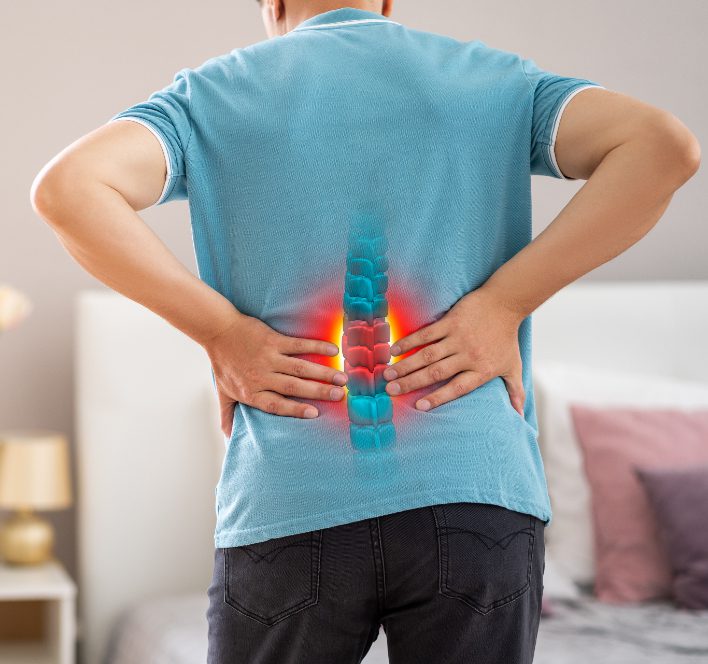Many people find themselves twisting and turning in their office chairs, trying to relieve lower back pain. For those with degenerative disc disease, sitting and standing for long periods of time may increase the irritability of the back injury. While there’s no cure for degenerative disc disease, there are many ways to treat and relieve its symptoms.
One of the main symptoms that those with degenerative disc disease experience is difficulty sitting for extended periods—people sitting at desks for most of the day risk straining the muscles and tendons. Sitting in one position for too long puts tension on the spine and lower back muscles. If you’re experiencing chronic pain because of degenerative disc disease, discussing your treatment options with a medical care professional may significantly reduce the amount of pain.
What Is Degenerative Disc Disease?
Degenerative disc disease refers to the deterioration of the spinal discs between each vertebra as a person ages. The weakening of the discs can occur as a result of a variety of factors, including personal habits, activities, diseases, and genetics. The area most likely to be affected by this condition are the neck and lower back—two areas that endure the most movement and pressure.
There are many symptoms of degenerative disc disease, including:
- Numbness and tingling down the arms or legs
- Weakness in the leg muscles
- Pain that is worse when sitting, bending, lifting or twisting
- Need to adjust seating or standing position often
- Periods of severe pain
In most cases, the condition is managed using non-surgical treatment methods and does not result in long-term disabilities. One of the natural aspects of aging is the changing of these discs, and at some point, nearly everyone will experience some type of pain in the spine. However, if you’re experiencing extreme pain and hindering symptoms, talk with a medical professional as soon as possible.
Incorporate Both Sitting and Standing for Degenerative Disc Disease
For those suffering from degenerative disc disease, finding a balance between sitting and standing positions is the best way to release the tension on certain parts of the body. Most people only consider sitting to irritate the muscles, but staying in one position for an extended period causes muscles, tendons, and ligaments to become rigid.
To reduce the amount of pain one experiences during work or other activities, here are some tips for integrating a more balanced and gentle movement into daily responsibilities.
Adjustable Workstations
Now more than ever, technology provides people with access to equipment that may help improve their work-related discomfort. For those suffering from this condition, adjustable desks can help people continue working in different positions. This option is perfect for those looking to change positions often.
Take Regular Breaks and Stretch
While purchasing an adjustable desk is a great option, it may not always be feasible. Whether or not you have an adjustable workstation, it’s still important to take breaks and stretch. Try gentle exercises that will slowly strengthen back muscles and help reduce back pain. Another important note for taking a break is to keep yourself hydrated. Spinal discs have an important jelly-like center that’s mostly water, so staying hydrated can help prevent water-loss in the discs and keep your back feeling a lot healthier.
Invest in High-Quality Materials
Using a chair that does not provide proper support to your back may cause an increase in back pain. Purchasing equipment that encourages proper posture as you work may likely reduce the symptoms of degenerative disc disease.
Incorporating healthy movement and habits into your daily life is an excellent addition to your treatment of degenerative disc disease. A balance between sitting and standing is the best option to relieve stress and pressure from the neck and lower back.
Contact NJ Spine and Orthopedic for Back and Spine Treatment
When stretching and home rehabilitation aren’t able to relieve your back pain, contact NJ Spine & Orthopedic for high-quality care from our award-winning neurologists, neurosurgeons, orthopedic specialists, and physicians. From non-surgical therapeutic methods to minimally invasive surgeries, our extensive treatment options allow our doctors to provide clients with the perfect treatment plan tailored specifically to each patient’s needs.
For more information about what types of treatment we offer and to speak with one of our board-certified doctors, call (866) 272-9271 or fill out our online contact form.

